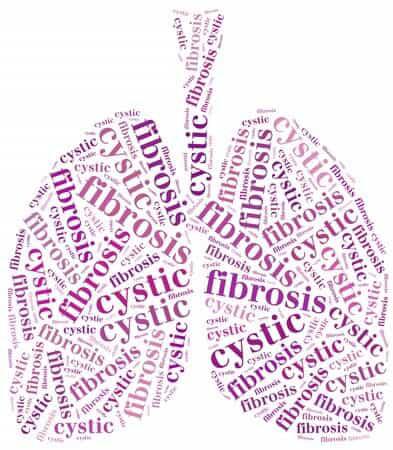Health Alert: One Hour Answers FAQ’s on Indoor Air Quality Cystic Fibrosis
People who suffer from Cystic Fibrosis typically experience wheezing and coughing as a result of frequent infections in the lungs. Over time, a coating of mucus develops over the lungs that can cause long lasting harmful effects or respiratory failure over time. Indoor air quality for Cystic Fibrosis is critical in preventing future infections of the lungs, which is why is so important to routine seek the insight of one of our Charlotte HVAC repair experts. In this article, we are going to provide you with an overview of Cystic Fibrosis, to better reveal the importance of taking a second evaluation of the indoor air quality of your home.

WHAT IS CYSTIC FIBROSIS?
Cystic Fibrosis transmembrane conductance regulator (ATP-binding cassette sub-family C, member 7). The CFTR protein on human chromosome 7 contains a broken protein, which hinders the ion chloride channel, causing thick and abnormal mucus in organs, most notably the lungs. The most common mutation is ΔF508, which contains a protein that does not fold properly and quickly degrades. More than 1800 mutations have been identified thanks to advances in technology.
HOW TO TREAT CYSTIC FIBROSIS
Treatment of Cystic Fibrosis has come a long way in the last 20 years since funding of orphan drugs became accepted. Cystic Fibrosis patients typically have a team of medical professionals tracking and monitoring the progress of the lethal inherited disease. This team includes a Cystic Fibrosis medical specialist (who advanced Cystic Fibrosis knowledge, and who often times is involved in research and providing feedback to the Cystic Fibrosis Foundation for further data implementation at Vertex Pharmaceuticals); a highly trained psychologist (often times this team member is the end-of-life-counselor or therapist); a dietitian (provides important observation and feedback in regard to food intake, weight gain or loss; a Gastroenterologist (working closely with other team members when GI function decrease and a G-Tube is necessary); a CF RN Specialist (providing direct patient care and to influence other nurses doing so); and supporting medical professionals.
The five-member team whose roles are briefly outlined above are the core CF treatment team. Each CF patient has very unique genetics, thus making each treatment plan unique. Doctor visits are scheduled every 60 – 90 days for CF checkups. The core CF treatment team will observe, monitor and make recommendations to alter the plan according to current symptoms and history of the patient. Immunizations are important as something as simple as the flu can cause a life threatening situation virtually overnight due to the bacteria breeding ground in the lungs.
Staying current with immunizations for Cystic Fibrosis patients is imperative to overall health. Medications are a necessity and only slow down the damage to the lungs and can possibly improve breathing. During this type of therapy, a vest is worn to loosen mucus plugs in the lungs during nebulized treatments. Common medications include pancreatic enzyme supplements, fat-soluble multivitamins, mucolytics, antibiotics (inhaled, oral, Intravenous (IV) antibiotics, bronchodilators, anti-inflammatory agents), and CFTR potentiators. This list is not all-inclusive and other treatment methods can be available. Digestive therapy includes a high calorie, high fat diet. Simply put, CF patients can eat most anything they want without growing obese as the body is only able to absorb 20% – 50% of the nutrients. Complication therapy involves a two-week hospital stay to clean the lungs with Intravenous (IV) antibiotics delivered through a PICC line.
IS CYSTIC FIBROSIS TREATMENT EXPENSIVE?
This question is hotly debated in relation to country. The obvious answer is “Yes”. The cost of a two week hospital stay can exceed $60,000 and normally approaches $80,000. Monthly medications can exceed $5000 to $10,000. The cost of the medication can be reduced through patient assistance programs. The real expense is the tragedy of the genetic disease and the families affected.
IS THERE A CURE FOR CYSTIC FIBROSIS?
There is no cure for Cystic Fibrosis. Advancements in technology for research and new drugs have allowed CF patients to live longer by attacking the root of the problem. This is only currently available for 4% of the Cystic Fibrosis population. The remaining 96% of CF patients eagerly await specialized pharmaceuticals for specific genetic mutations, as new drugs are researched and developed targeting small groups at a time. Each new drug has a hefty price tag of roughly $3 Billion to go from inception to market.
HOW LONG DO PEOPLE WITH CYSTIC FIBROSIS LIVE?
In the United States, the approximate life expectancy of someone living with Cystic Fibrosis can be up to 37 years of age. It often depends upon the country a CF patient resides in, age of diagnosis, quantity and severity of lung and sinus infections, in addition to adenoid infection, antibiotic immunity and other strong mitigating factors. The daily caloric intake has a major impact upon lung function, which is aided by the body’s acceptance of pancreatic enzymes.
CAN I GET CYSTIC FIBROSIS FROM OTHER PEOPLE?
No, you cannot get Cystic Fibrosis from someone affected by the genetic disease. CF is a passed down from both parents, as it takes a copy of the gene from the mother and father for Cystic Fibrosis to occur.
After reading this information, do you have any questions regarding Cystic Fibrosis or your home’s indoor air quality? Don’t wait to get answers to your questions. Instead, contact our team of experts today at (704)-251-0610!
